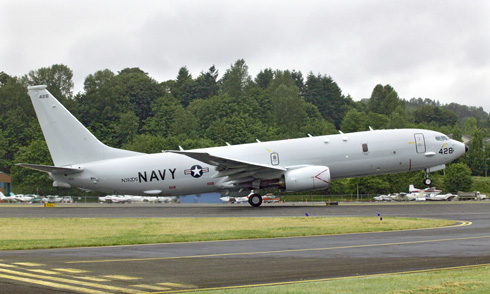WASHINGTON — A program that links reserve and National Guard members, their families and veterans with civilian employers has reached a milestone, with more than 1,000 employers now signed on to hire qualified job-seekers.
The Employer Partnership of the Armed Forces, originally an Army Reserve initiative that has expanded militarywide, is growing by leaps and bounds as it helps both the military and civilian employers tap into the same talent pool, reported Lt. Gen. Jack C. Stultz, chief of the Army Reserve, who founded the program.
In one of the more promising new developments, the Army Reserve, which still manages the program, is working with the Ford Motor Co. and Chrysler Corp. to provide hybrid vehicle certification training and jobs to military mechanics, Stultz said.
“They are going to provide the hybrid training to our mechanics, because the Army doesn’t have that training,” he said. “So they will provide that training at their expense.” In another innovative arrangement in the works, GE Healthcare, which manufactures MRI equipment and CT scanners, plans to hire military biomedical equipment specialists to maintain it, the general said.
Stultz said he has met twice with GE Healthcare corporate officer Mark Vachon to discuss the concept.
“I can recruit kids or take current soldiers I’ve got who want to get into that field,” he said. “Mike will take them and train them at his facility in Milwaukee and certify them.” From there, he added, the trainee will move into one of about 300 high-demand jobs GE Healthcare opens each year around the country.
Stultz calls the partnership initiative a win-win situation for everyone involved. Reserve-component members get a leg up in a competitive job market. Employers who understand their military obligations guarantee interviews for qualified applicants, as well as priority placement for openings. In return, employers get to capitalize on the participants’ military training, while getting a quality worker many say is increasingly difficult to come by.
Vachon at GE Healthcare told Stultz he’s impressed with the quality and integrity of employees he gets through the program.
“I can take a soldier and I can trust that if that soldier goes to a hospital to take care of equipment, he is going to do his job,” Stultz said, quoting Vachon. “He understands what ‘mission first’ is all about.”
That’s the kind of feedback Stultz said he hears regularly from the 1,155 program partners: Fortune 500 companies such as Wal-Mart Stores Inc. and General Electric, as well as the Washington, D.C., police department, mom-and-pop companies and everything in between. “We are seeing more and more larger employers like General Electric, like Wal-Mart, coming on board and saying, ‘We want to be a part of that,’ ” he said.
“The thing that’s exciting about this is the employers ‘get it,’ ” the general added. While headlines decry a failing American education system and the country’s inability to compete with the rest of the world, he said, employees recognize a special talent pool that has yet to be fully leveraged.
“Employers of America see this as a new class of work force,” Stultz said. “That is what we are hearing from the employers. They talk about the quality, the integrity, the ethics.” INOVA Health Systems of Northern Virginia, which become one of the first formal members of what was then known as the Army Reserve Employer Partnership Initiative in April 2008, “has gone gangbusters with it,” Stultz said.
The company initially joined the partnership to fill critical job shortages with reservists the Army trains in radiology, respiratory therapy and surgical specialties. But the experience proved so successful that INOVA branched out to create its own “Military to Medicine” program that provides a career pathway for veterans, military spouses and recovering wounded warriors.
Company officials say they hope the specialized education, training and hiring programs provided through “Military to Medicine,” plus transferability options offered to spouses uprooted during military moves, help to attract qualified health care workers.
“They are focused on veterans, reserve soldiers and spouses, and they are hiring them all,” Stultz said. “And they are quantifying success in terms of turnover, productivity and absenteeism, and they are saving millions of dollars.”
Program officials hope a new job-search application tool they plan to roll out next month will take the partnership program to the next level as it makes it easier for qualified job-seekers and employers to connect.
As the initiative continues to grow, Stultz said, he sees opportunities for the military and civilian employers to collaborate in other ways, such as in health care coverage.
He noted that the Army Reserve and private employers often overlap coverage as reservists get called to active duty, then demobilize. As a consequence, both end up paying more than necessary, and family members have to switch providers as they’re thrust from one system to another.
“There is a lot of efficiency to be had in terms of, ‘How do we partner with our employers out there in corporate America and share the cost together and save money?’ ” Stultz said. “Both of us can save money.”
Source:
U.S. Department of Defense
Office of the Assistant Secretary of Defense (Public Affairs)

 von
von 
